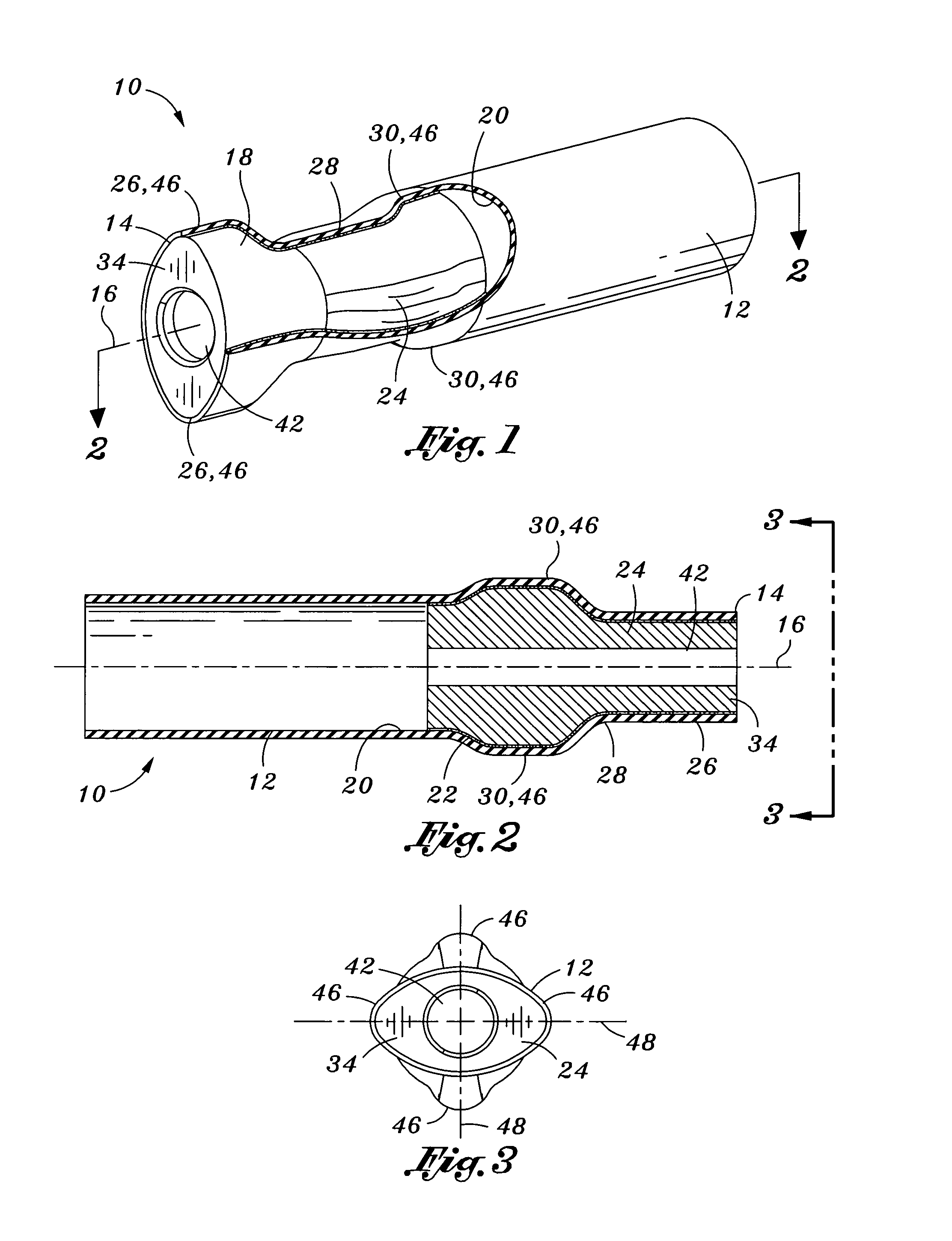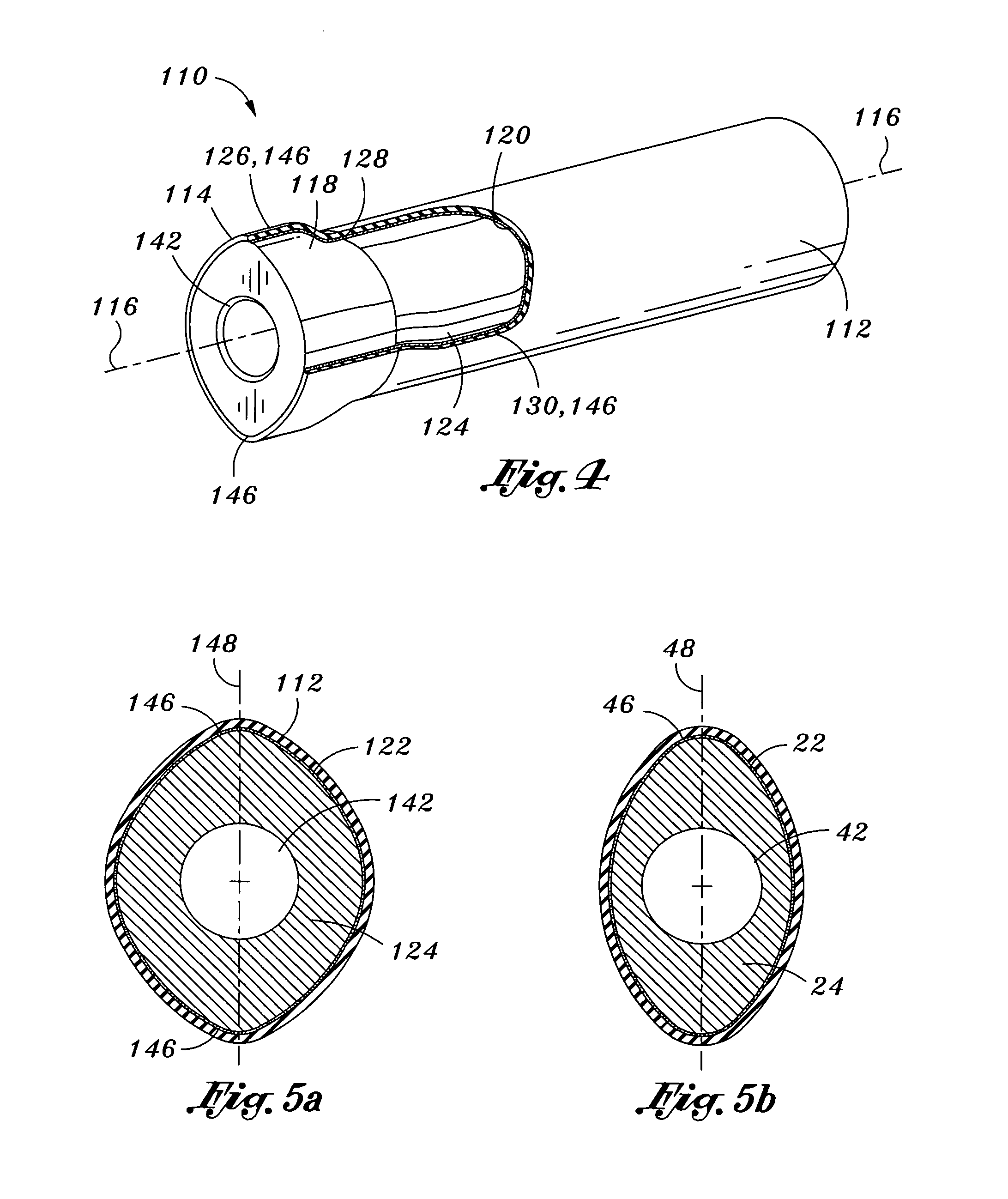Composite torque tube captured end fitting
a composite torque tube and end fitting technology, applied in the direction of shafts, shafts and bearings, shafts for rotary movement, etc., can solve the problems of increasing the length of end fittings, increasing the amount of surface area required in order, and increasing the amount of axial or torque loads, so as to improve the torque and axial the axial loading capability and torque loading capability of the torque tube assembly are enhanced, and the axial loading capacity of the torque tube assembly
- Summary
- Abstract
- Description
- Claims
- Application Information
AI Technical Summary
Benefits of technology
Problems solved by technology
Method used
Image
Examples
Embodiment Construction
[0028]Referring now to the drawings wherein the showings are for purposes of illustrating the present invention and not for purposes of limiting the same, provided is a torque tube assembly 10 which, as shown in FIGS. 1-3, comprises a hollow composite member 12 having at least one end portion with an end fitting 24 inserted thereinto. More specifically, the end fitting 24 is formed with a shaped that complementary to the composite member 12 and is at least partially enclosed or encased by forward and aft sections 26, 30 of the hollow composite member 12.
[0029]The hollow composite member 12 may be defined as a generally elongate tubular member having a tube axis 16, an inner surface 20 and an outer surface 18. The composite member 12 includes at least one free end 14 into which the end fittings 24 may be inserted. As shown in FIGS. 1-3, the free end 14 of the hollow composite members 12 is also divided into forward and aft sections 26, 30 with a waist section 28 being disposed betwee...
PUM
 Login to View More
Login to View More Abstract
Description
Claims
Application Information
 Login to View More
Login to View More - R&D
- Intellectual Property
- Life Sciences
- Materials
- Tech Scout
- Unparalleled Data Quality
- Higher Quality Content
- 60% Fewer Hallucinations
Browse by: Latest US Patents, China's latest patents, Technical Efficacy Thesaurus, Application Domain, Technology Topic, Popular Technical Reports.
© 2025 PatSnap. All rights reserved.Legal|Privacy policy|Modern Slavery Act Transparency Statement|Sitemap|About US| Contact US: help@patsnap.com



